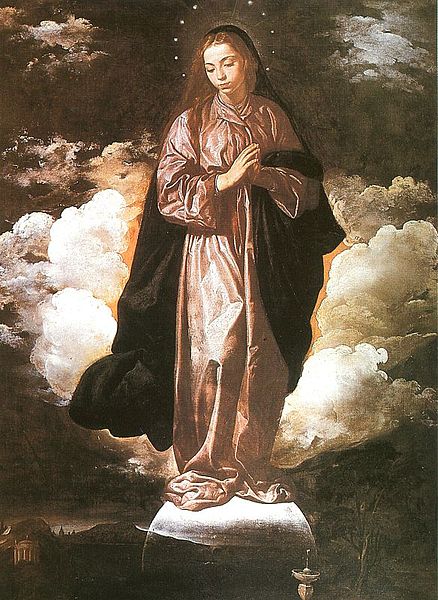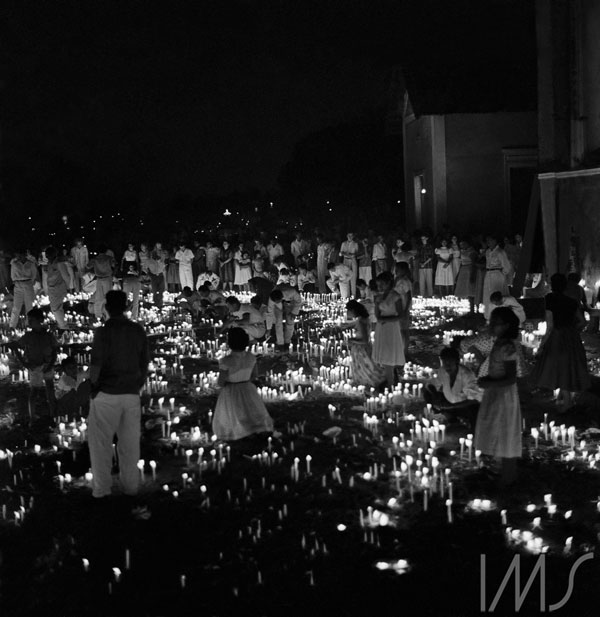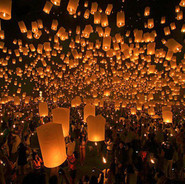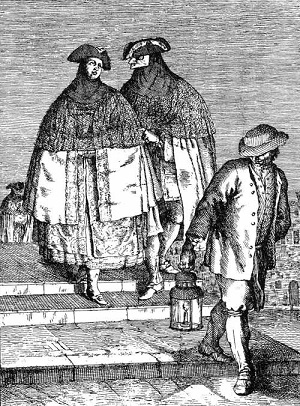A FESTA DAS VELAS VOTIVAS EM BAGÉ - V
Cláudio Antunes Boucinha [ Licenciado em História (UFSM). Mestre em História do Brasil (PUCRS)]
Devoção Mariana no Contexto Cultural de Bagé:
Breve Referência Histórica
sobre as Velas Votivas
no dia 24 de Maio
Introdução
O principal trabalho de pesquisa feito sobre a lâmpada votiva ou vela votiva, em Bagé, isto é, sobre a festa da padroeira de Bagé, comemorada sempre no dia 24 de maio, foi o trabalho de Dias&Safons&Guedes(1979).
A lâmpada votiva também foi objeto de resgate histórico, assim como sobre a devoção mariana em Bagé, por parte de Giorgis(1999); Lopes(1998); Beckman&Beckman(1982); Vieira(1982); Ribas(1982).
No entanto, enquanto surpreendente e pioneira na busca das origens dessa tradição em Bagé, o trabalho de Dias&Safons&Guedes(1979) foi referência obrigatória no que concerne ao assunto.
Não era do interesse do estudo fazer histórico de como foi instituída a data de 24 de maio como dia de Nossa Senhora Auxiliadora http://www.montfort.org.br/imaculada-conceicao-honrar-a-deus-nas-suas-obras/imaculada-conceicao-diego-velazquez/ , possivelmente instituído em 1816, para lembrar acontecimento ocorrido em 24 de maio de 1814:
http://www.montfort.org.br/imaculada-conceicao-honrar-a-deus-nas-suas-obras/imaculada-conceicao-diego-velazquez/ , possivelmente instituído em 1816, para lembrar acontecimento ocorrido em 24 de maio de 1814:
“No entanto, a festa de Nossa Senhora Auxiliadora só foi instituída em 1816, pelo Papa Pio VII, a fim de perpetuar mais um fato que atesta a intercessão da Santa Mãe de Deus: Napoleão I, empenhado em dominar os estados pontifícios, foi excomungado pelo Sumo Pontífice. Em resposta, o imperador francês seqüestrou o Vigário de Cristo, levando-o para a França. Movido por ardente fé na vitória, o Papa recorreu à intercessão de Maria Santíssima, prometendo coroar solenemente a imagem de Nossa Senhora de Savona logo que fosse liberto. O Santo Padre ficou cativo por cinco anos, sofrendo toda espécie de humilhações. Uma vez fracassado, Napoleão cedeu à opinião pública e libertou o Papa, que voltou a Savona para cumprir sua promessa. No dia 24 de maio de 1814, Pio VII entrou solenemente em Roma, recuperando seu poder pastoral. Os bens eclesiásticos foram restituídos. Napoleão viu-se obrigado a assinar a abdicação no mesmo palácio onde aprisionara o velho pontífice. Para marcar seu agradecimento à Santa Mãe de Deus, o Papa Pio VII criou a festa de Nossa Senhora Auxiliadora, fixando-a no dia de sua entrada triunfal em Roma”.http://noticias.cancaonova.com/conheca-a-historia-de-devocao-a-nossa-senhora-auxiliadora/
Também não era primordial buscar tradições semelhantes no folclore e na cultura brasileira e mundial, embora deva citar o caso da “Alumiação” Alumiação, c. 1940. Manaus, AM. , em Manaus, Amazonas, da exposição votiva de milhares de velas acesas ao redor dos túmulos no dia de Finados, dois de novembro, nos cemitérios públicos (CASCUDO, 1979, p. 44).
Alumiação, c. 1940. Manaus, AM. , em Manaus, Amazonas, da exposição votiva de milhares de velas acesas ao redor dos túmulos no dia de Finados, dois de novembro, nos cemitérios públicos (CASCUDO, 1979, p. 44).
“Diz-se em Manaus, Amazonas, da exposição votiva de milhares de velas acesas ao redor dos túmulos no dia de Finados, 2 de novembro, nos cemitérios públicos. A tradição cristã de simbolizar a vida humana, ou a fé, na chama das velas, significa também a presença de orações e lembranças aos mortos, desde o período das catacumbas, na era das perseguições imperiais. Nos países católicos as velas são acesas nas sepulturas no Dia de Finados, aniversário do falecimento ou qualquer data oblacional, durante o Advento, na manhã do dia do Natal, Todos os Santos (1º de novembro) ou Dia de Ano (1º de janeiro). Há uns cinqüenta anos as velas eram previamente “bentas”, mas hoje[ Ano de 1979?] já não há essa exigência. As velas acesas nos cemitérios são tradicionais, desde o México”. [ Luis da Câmara Cascudo. Dicionário do Folclore Brasileiro. http://adcon.rn.gov.br/ACERVO/dei/DOC/DOC000000000052487.PDF ]
As luminárias de origem chinesa ou japonesa, extremamente simbólicas, lembram muito a experiência de Bagé :
“Paper lanterns are special kind of lanterns that originate from China and Japan. They are made from paper or silk, with frame from bamboo or wood and a lit candle inside as a source of light. Modern paper lanterns have battery-operated lamps. Traditional paper lanterns were made in the image of myths, things from nature and or in the spirit of local culture. Modern ones have many more different shapes: from traditional dragons to pop icons. They symbolize joy, celebration, good fortune and longevity, and they have role as protectors from evil.
Earliest data show that creating of paper lantern started in China somewhere in 230 BC. Myth says that Emperor Ming, after a dream he had, sent a scholar to India to get Hindu scriptures. When the scholar got back, emperor ordered building of a great temple for scriptures and ordered in it many of paper lanterns to symbolize Buddha’s power. Today paper lanterns are associated with festivals and (for the west) one of the characteristic symbols of the east. During the Lantern Festival in China, which is celebrated on the 15th day of the first moth of the lunar year, people bring many paper lanterns in order to honor the first full moon of the year. Children go with paper lanterns to temples and solve riddles on the lamps. This is the last ritual in the celebrating of Chinese New Year.
One more festival is known for its use of paper lanterns and that is Mid-Autumn Festival that celebrates ending of the harvest. It is celebrated in China and Vietnam. There, paper lanterns symbolize sun, light and warmth, and prayer to the Sun to come back after the winter. East is not the only place that uses paper lanterns in its rituals and celebrations. During Christmas it is tradition some Hispanic communities to place paper bags with lit candle in it in long rows. That kind of paper lantern is called “farolito” or "luminaria” https://s-media-cache-ak0.pinimg.com/736x/76/b1/0e/76b10e8cf4ee090f566fe701f48a4c13.jpg . They are placed with intention to lead spirit of a Christ child to the home of one who placed those lanterns. In the time of Festa della Rificolona
https://s-media-cache-ak0.pinimg.com/736x/76/b1/0e/76b10e8cf4ee090f566fe701f48a4c13.jpg . They are placed with intention to lead spirit of a Christ child to the home of one who placed those lanterns. In the time of Festa della Rificolona http://unaitalia.ru/assets/galleries/89/thumbs/Festa-della-Rificolona.jpg , festival that is held in Florence, Italy on the 7th September in a place of the great fall market, children carry paper lanterns while other children try to shoot lanterns with pea-shooters. Some places, like restaurants and stores, hang paper lanterns for atmosphere, as decoration or to attract customers.
http://unaitalia.ru/assets/galleries/89/thumbs/Festa-della-Rificolona.jpg , festival that is held in Florence, Italy on the 7th September in a place of the great fall market, children carry paper lanterns while other children try to shoot lanterns with pea-shooters. Some places, like restaurants and stores, hang paper lanterns for atmosphere, as decoration or to attract customers.
Although an old tradition, paper lanterns resisted time and are still here because they carry powerful symbolism”. http://www.historyoflamps.com/lantern-history/history-of-paper-lanterns/
As lanternas venezianas http://www.italianbuddy.com/wp-content/uploads/2014/02/codega_low.jpg também participam dessa longa jornada através da história da humanidade, nas noites terrenas:
http://www.italianbuddy.com/wp-content/uploads/2014/02/codega_low.jpg também participam dessa longa jornada através da história da humanidade, nas noites terrenas:
“HISTORY OF THE CODEGA, When there was still no streetlights that illuminate Venice today, scattered everywhere, the city plunged into darkness after sunset. Only a few votive candles lighted sacred images along the walls, the "cesendeli". By the middle of the fifteenth century the number of assaults had soared so much that a law was passed which made it mandatory to use a light to those who go around past three in the morning. People then geared up with candles and candlesticks, lanterns and all sorts of light, while the nobles and the rich hired somebody to light the way for them: the "codega" that preceded them holding up a lantern. The word probably comes from the greek odegos, which means "guide", and in more recent times, when the "light-bearer" was no longer needed, the name was given to the hotel bellboy equipped with umbrella that welcomed guests on rainy days. The same name was also used for those who escorted girls back home after a theatre show. With some variation in meaning, the term survives today, indicating who happens to be the third wheel”. http://www.venice-carnival.org/en/approfondimento/3/history-of-the-codega.html
“In Venice, from the middle of the fifteenth Century, the nobles and the wealthy were preceded by a servant called "Codega", equipped with a lantern to enlighten their path in the darkness of night, delighting them with anecdotes and stories”. http://venice.cityexperience.it/en/a23/venice-carnival-2014-special-event.html
“In the past, Venice was not well lit by street lamps and along the numerous "calle", the typical narrow Venetian passageways, the only lights were the so-called "cesendeli", the candles used to illuminate the religious images on the walls. After a period of violence in about 1450, a law was passed forcing those who ventured outside after sundown to carry a light. They could use candles, candelabras, lanterns and many other types of lights. The nobility, the wealthy merchants, and especially the foreigners (foresti) were accompanied by a servant called a "codega" who held a lamp before them and helped them make their way. The term "codega" may derive from "cotica", the thick, hard pork skin used to feed the flame for the light. It may also derive from the greek "odegos", or "guide"”.http://www.hotelalcodega.com/location.php#
A pesquisa de tradições semelhantes é variável que precisa melhor avaliação e aprofundamento, visto que se argumenta a favor da originalidade da tradição da vela votiva em Bagé. Todas essas experiências ajudam a compreender o significado das velas votivas em Bagé
Não era essencial , ainda, procurar entender o uso de velas no folclore brasileiro e seu significado religioso ou mesmo suas origens histórico-culturais, embora também possa se fazer pesquisa nesse sentido, como indicou Cascudo(1979, p 786), de maneira instigante.
O objetivo principal era procurar as origens da tradição das velas votivas em Bagé, procurando seguir o roteiro já delineado por Dias&Safons&/Guedes(1979), comparando informações, somando esforços para resgatar a história de Bagé.

Comentários